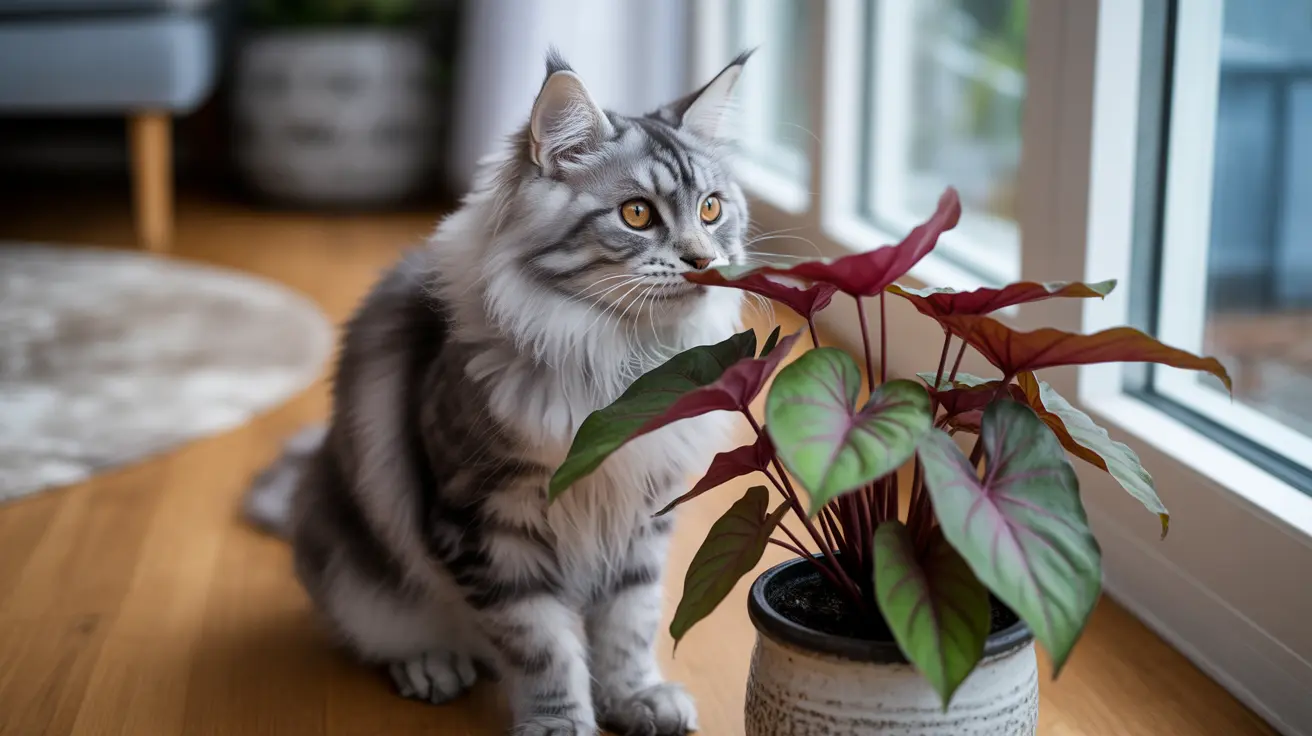Understanding Caladium's Toxicity to Cats
Caladium, with its stunning heart-shaped leaves and vibrant colors, is a popular ornamental plant that unfortunately poses serious health risks to our feline companions. While these plants add beautiful tropical flair to homes and gardens, their toxic properties make them potentially dangerous for cats and other pets.
Every part of the caladium plant contains insoluble calcium oxalate crystals and other harmful compounds that can cause immediate and severe reactions if ingested. Understanding these risks is crucial for cat owners who either have these plants or are considering adding them to their homes.
Why Caladium Is Dangerous for Cats
The primary danger of caladium comes from microscopic calcium oxalate crystals present throughout the plant. When a cat bites or chews any part of the plant, these sharp crystals are released, causing immediate tissue damage and inflammation.
Additionally, the plant contains other toxic compounds including dicarboxylic acids, which further contribute to its poisonous effects. Even casual contact with broken stems or leaves can cause skin irritation in both cats and humans.
Recognizing Symptoms of Caladium Poisoning
Immediate Signs
- Intense oral pain and burning
- Excessive drooling
- Pawing at the mouth
- Visible swelling of lips and tongue
Secondary Symptoms
- Difficulty swallowing
- Vomiting
- Loss of appetite
- Potential respiratory distress
Emergency Response and Treatment
If you suspect your cat has ingested caladium, immediate action is crucial. Contact your veterinarian or emergency animal hospital right away, even if symptoms appear mild initially. Take photos or samples of the plant for positive identification.
Treatment typically involves supportive care, including:
- Rinsing the mouth to remove crystal particles
- IV fluids for hydration
- Anti-inflammatory medications
- Pain management
- Monitoring for respiratory complications
Prevention and Safe Alternatives
The best way to protect your cats from caladium poisoning is through prevention. Consider these safety measures:
- Remove caladium plants from your home and garden
- Choose pet-safe alternatives like Boston ferns or spider plants
- Keep outdoor cats away from areas where caladium grows
- Educate family members about plant toxicity risks
Long-term Management and Home Safety
Creating a cat-safe environment requires ongoing vigilance. Regularly inspect your home and garden for potentially toxic plants, and maintain an updated list of safe and unsafe plants. Consider creating dedicated "cat gardens" with pet-safe plants to satisfy your cat's natural curiosity about vegetation.
Frequently Asked Questions
What parts of the caladium plant are toxic to cats and how do they affect them?
All parts of the caladium plant, including leaves, stems, roots, and tubers, contain toxic calcium oxalate crystals. These crystals cause immediate tissue irritation and inflammation when ingested or chewed.
What are the common symptoms my cat might show if it ingests caladium?
Common symptoms include excessive drooling, oral pain, swelling of the mouth and tongue, vomiting, and difficulty swallowing. In severe cases, breathing difficulties may occur.
What should I do immediately if I suspect my cat has eaten caladium?
Contact your veterinarian immediately, take photos or samples of the plant, and monitor your cat's breathing. Don't wait for severe symptoms to develop before seeking help.
How is caladium poisoning in cats diagnosed and treated by veterinarians?
Diagnosis is typically based on exposure history and clinical signs. Treatment includes supportive care such as IV fluids, pain management, and monitoring for respiratory complications.
How can I safely keep caladium plants in a home with cats or choose safer alternatives?
The safest option is to remove caladium plants entirely and choose pet-safe alternatives. If you must keep caladiums, place them in completely inaccessible areas where cats cannot reach them.
Conclusion
While caladium's beauty is undeniable, the risks it poses to cats make it an unsuitable choice for homes with feline residents. Understanding these dangers and taking appropriate preventive measures is essential for maintaining a safe environment for your pets.
If you currently have caladium plants, consider replacing them with pet-safe alternatives. Your cat's safety should always take precedence over decorative plant choices.






